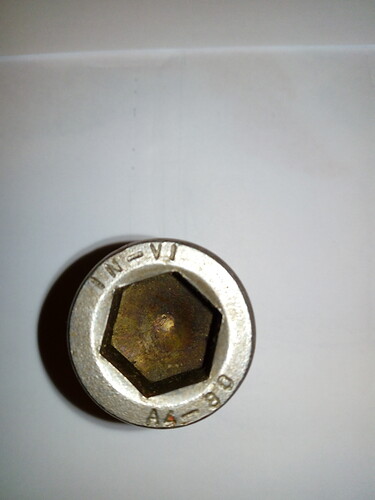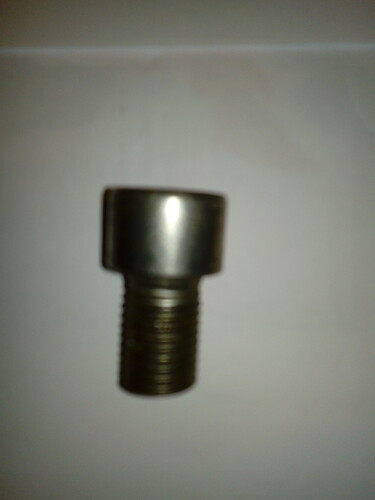Yes they can. But preheating air highers efficiancy and aids to whats called the flywheel effecþ. Making constant quality gas when engine demand shifts.
Hi, Haapio!
15.2.2021
Siittä vaan! Suomen Ekoautoilijat r/y ! (just for reference)
It is still more efficient to deliver the exiting gas heat to the wood in the silo. (indirectly of course)
And complementing condensation at the periphery. In a doubble mantel or externally.
This contributes to better drying of the wood; the internally bound water in wood consumes a lot of PROCESS HEAT, which is lost from the gasification and reduction processes.
So, the drier wood we present to the gasification and especially to the reduction process, the more completion the reduction process will reach.
Max
Hi, Tone!
16.2.2021
Heat up, gas out!
Max
Hi, Haapio!
17.2.2021
Bolts can be used as nozzles, but size and length and count are naturally dependent of the planned hearh-size.
Gasifier planning usually goes “backward” starting from the planned or needed gas consumption.
Do you need a formula for the consumption of a motor at a specific displacement volume (cylinder volume) and rpm?
The practical design varies with the planned use; for example cars, boats, tractors, stationery designs have their own solutions…
Switzerland had charcoal-gas driven surveillant planes…
Max
Good Morning Tone,
I have studied much your charging regulation system.
Three phase AC.
I can follow this as I was an automotive electrical specialists for many years. ALL, I ever worked with (except one old obscure) were at their hearts 3 phase AC also. With a DC made variable field.
Here; US and Canada, we use at the personal consumer level only single phase AC.
Sigh. It is weird. An relatively poor to weld with versus three phase.
Now onto your gasifier “Properties” topic.
I am now realizing doing trial simulations just how important in a downdraft wood gasifier the above jets ACTUAL VOLUME is to the; below the jets EFFECTIVE VOMUME.
“Effective” below the jets is the actual working volume AFTER the char-ash cone and coating ash crust have formed.
Joni last pictured this the best on his GJ 9.0 beginnings topic pictures set. Viewing down only removing the loose center materials.
In all of the publications these volumes proportions are inferred by the nozzle ring dimensions; the base recommended diameters and height settings.
And taking wood gasifier systems with known good performances; assuming they must be within a range of best-use; then a mathematical chart of volume ratios could be made up.
For woodgasifers I can now state why I see this volumes concept works.
As the wood burns down to wood charcoal it shrinks in volume.
And to keep a tight bed of hot wood charcoal that ALL gases must pass through formed . . . then the effective materials holding volume must shrink proportionally also.
Most systems are making the below the jets effective after ash-crust build up TOO SMALL.
And the straight tube walls systems this below the jets is TOO LARGE versus the raw wood volume possible above.
Regards
Steve unruh
Hi, Steve!
8.3.2021
A “record” Volvo with a 2,4 L motor made 130 km/h on “open roads” during its travel from Finlands southern tip to Nordcap in Norway. Within 24 hours.
Its cut cone, from nozzletips to restriction volume is
7% of the “sekundenverbrauch”, as the Germans say.
And half a cigarett pak fuel size.
Why is nobody else taking the ratio of the cut conical hearth volume to consumption per second into account when designing the hearth?
Max
Good point Max
Excellent document with tables for calculating hearth size and load here
http://www.driveonwood.com/library/fao-72/
Hi Max,
Secundenverbrauch translates to Second Consumption/expenditure/drain
So in converting woodfuel as a solid as completely as possible into fuel gases: the the second major phase of physical form changing.
Joni’s; WayneK’s a few other system place the actual restriction very low down with ~80% of the made wood char and gaseous reduction above their restrictions. KristijanL was the 1st to verbalize recognize this.
My active materials guess volumes ratio only works by adding in all active char areas above, and below, the restriction to the char being grate held volumes.
Something with your vertical-bar, thermal/char-saver grate tubs you should minds-eye see also, maybe…
So from a confusing four zones concept; to a practical in-use, functional two zone concept.
Viewing as such may help others not get lost in the upper systems idealizing before they ever make it down to the lower system needs.
Regards
SteveU.
Hi, Wallace!
9.3.2021
Excellent for standard builders.
Typical; no explanation of HOW the presented measures have come about!
Just measure tables, in Blanco!
Binding to flow makes sense.
Max
High, Steve!
9.3.2021
The nozzles to restriction cut cone process volume is optimized to deliver a white glowing optimally (tar) cracked raw gas with only a small part of unbound oxygen remaining.
Above it, heat is spent to boil off water first, then tar from the wood.
Assisting in this, a plank preheating the wood with the “free” exiting gas-heat is helpful.
And peripheral or external condensation.
The main aim is to deliver the hottest possible and tar-free
low-oxygen gas swiftly into the reduction part.
The better this part functions, the better the reduction comes to grip with its task.
To dimension, the oxidation zone (cut cone) as a percentage part of the gas consumed per second has been successful in applied cases.
From Dutch Johns, small “grasshoppers” driven on part load to WWII heavy trucks in Sweden and elsewhere.
These calculations are the easiest to do for full load conditions.
Dutch John had the best performance with 4% oxidation volume (part-load). For small “grasshoppers”.
The record Volvo was specially designed for the record trip, but it has functioned well also in normal traffic. 7%
Fuel size: Half a cigarette pack.
For big trucks 9 — 11%.
Fuel size: Bear can.
I think we have a design criterium with some good results…
To handle cut cone properties, try this when you draw: Conical Frustum Calculator
Max
I will make a $100 donation to the first go fund me guy that goes to Bonneville and sets a woodgas land speed record to exceed 100mph.
Wayne did 84mph in 2011…
Then you will see properties of a good wood gasifier.
Nothing proves concepts like competition
I think your money is safe. I was thinking “oh that would be funny to do that”, and the vehicle I am planning on converting is an old racing lawn tractor that I never had full throttle in the backyard because I would have lost a kidney because of all the bouncing at like what seemed like 50mph (it was probably closer to 15-20).
Is a race something that should be done on like the indiana ‘salt flats’ like the Argos midway? (provided that doesn’t violate some of the fairgrounds policies.)
Hi Jan!
14.3.2021
The correct title is: Monorator from Finland
Max
Max, I search and it did not show up under the title. I founded Chris S. WK Plank build gasifer. But not yours.
I have been thinking on how to incorporate the plank into my hopper/monitor build
Bob
P.S. you can answer on my Rebuilding 2012 WK Firetube thread.
Hi, Bob!
15.3.2021
Still, you missed it! It still is my plank! Chris and I have discussed it, and this is a proposed version suitable for his proportions of a new gasifier with 2 built-in cyclones. Therefore the horizontal flow direction was chosen. It has not yet been presented, but we hope that it will happen soon…
Max
Hi, Jan!
16.3.2021
The correct titel is: MONORATOR !
Max
Hi, Jan!
The titel is: MONORATOR from Finland!
Max




